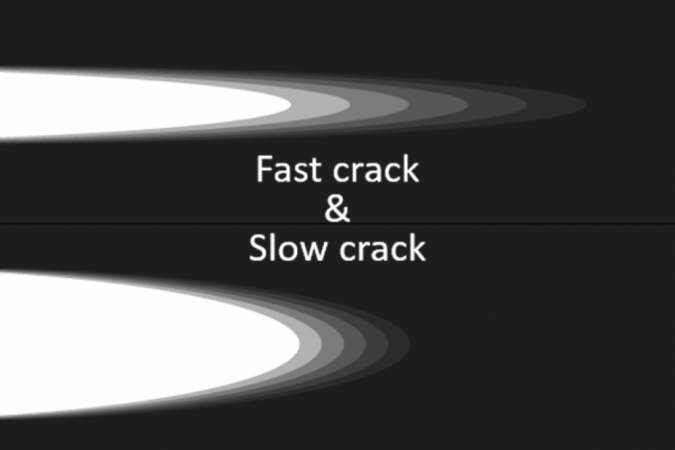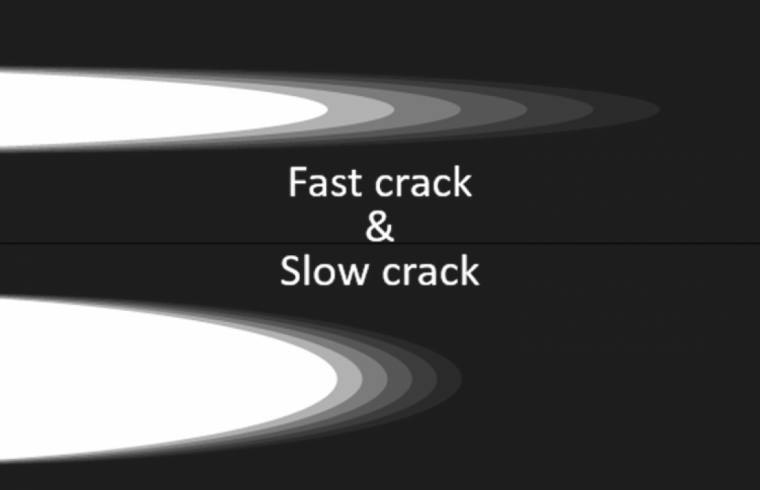Tokyo, Japan – Understanding the fracture behavior of rubber materials is critical to various industrial applications, including the improved design of reliable products. A team from Japan has identified the origin of a phenomenon that occurs when rubber materials under stress rapidly break, and has shown that this abrupt fracturing occurs in many viscoelastic materials.
The mechanism of the velocity jump—a phenomenon in which the initial slow crack in a strained rubberlike material abruptly and rapidly grows—has been a mystery for years despite its importance in the design of durable materials. Now, there is evidence to support a new theory to explain this unique event.

In a study published this month in Physical Review Materials, researchers from The University of Tokyo Institute of Industrial Science have built a simplified mathematical model that merges two previous analyses to reveal the stress-strain behavior of rubber materials during breakage, further supporting their theoretical analysis with a series of experimental studies.
“The velocity jump phenomenon in crack propagation remained unsolved for more than 30 years,” says lead author of the study Atsushi Kubo. “Our step-loading model is designed to replicate the non-monotonic mechanical behavior when the rubber material undergoes this sharp transition in fracturing near the crack tip. Because it does not have to directly reproduce the complex crack propagation process, which involves several phenomena, this allows us to construct a simplified model that successfully exhibits the velocity jump.”
Through their simplified step-loading model, the researchers showed that the mechanical behavior observed from one analysis approximated the phase transition mechanism described in the other proposal, merging the two distinct analyses.
“For the step-loading model, we used a linear viscoelasticity to mimic the near-tip mechanical behavior in the material. We also implemented a stepwise function without consideration of the crack geometry to model the rapidly applied external force at the crack tip,” explains Yoshitaka Umeno, senior author. “This simplification allowed us to achieve a mechanical model for the crack tip as a ‘point mass connected to a viscoelastic element under step loading’.”
The research team’s combined theoretical and experimental study also showed that the velocity jump phenomenon can be found in other materials.
“Our findings suggest that the velocity jump may occur in general viscoelastic and polymeric materials, in addition to rubberlike solids. It is crucial to have this integrated understanding of the mechanism to stimulate the development of more robust polymer materials that are critical to many different industries,” says Kubo.









